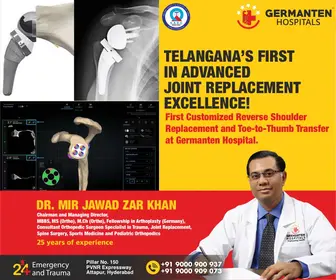
By Sejal Gupta
Across India, women, transgender persons, and other marginalised communities still encounter significant barriers to meaningful technology use, ranging from patchy connectivity and digital illiteracy to deep-rooted social norms and policy gaps. While often hailed as a neutral catalyst for economic growth and social change, technology, in practice, operates within existing hierarchies of gender, caste, class, and geography, and its promise of empowerment is still unevenly fulfilled. This disconnect between possibility and reality was one of the central questions of the session on “How Can Technology’s Transformative Potential Be Harnessed in Ways That Are Truly Inclusive?” at the Gender and Inclusion Conference held at IIIT-Hyderabad, on August 9, 2025. It highlighted the layered ways in which technology interacts with societal inequalities. While success stories exist, persistent gaps in access, control, and agency continue to shape who benefits from technological advances.
Digital inclusion and exclusion
Technology is not inherently inclusive. A 2023 study conducted for the ICSSR-sponsored project, State, Market and Digitalisation: A Study of Digital Democracy and Exclusion in India, covering the capital cities of Delhi, Jammu & Kashmir, Gujarat, Kerala, and Assam, found that device and internet access gaps persist, with women in many households still reliant on shared family phones. Such arrangements limit privacy, autonomy, and the ability to fully engage with digital spaces.
A pan-India Google survey on the impact of AI and IoT on college-going youth pointed out that access alone is insufficient. There are entrenched barriers in training, affordability, and safety. Online harassment, algorithmic biases, such as default female AI voices reinforcing stereotypes, and policies that ignore the intersections of gender, caste, and geography risk deepening exclusion. Digital inclusion must go beyond enabling online payments or social media use. It requires ownership, control, and the capability to leverage technology for sustained economic and social participation.
Labour market discrimination
Economic inequality in India is tightly bound to social inequality. Wage gaps, occupational segregation, and barriers to mobility persist for women and transgender persons. Drawing on NSS data, trends show that while female labour force participation rose steadily between 1983 and 2004, it has since declined, with employment shifting back to agriculture.
This reversal has been accompanied by declining participation among women aged 15–40. Even with equal education and skills, women earn less than men, particularly in the service and private corporate sectors. Wage gap analysis indicates that only about 35% of disparities can be explained by measurable factors such as education, age, and skills, leaving the remaining 65% attributable to discriminatory factors, including caste, gender, and religion.
For transgender individuals, the challenge begins with access to employment, compounded by barriers in higher education. While technological innovation and skill development can narrow these gaps, they can only do so if access to education, training, and infrastructure is equitable.
Entrepreneurship and innovation
Government-supported and non-profit initiatives are working to bridge these divides by fostering entrepreneurship and skill development among rural women, self-help groups, persons with disabilities, and transgender entrepreneurs. The urban innovation and rural outreach initiatives under organisations like WeHUB often combine digital literacy, financial literacy, mentoring, and access to credit.
Case studies show how targeted interventions can transform livelihoods: rural artisans connecting to global markets through e-commerce, women-led food businesses scaling up with branding and packaging support, and transgender photographers establishing sustainable enterprises. Yet, challenges remain. Hybrid online–offline training models have emerged to address this, but onboarding remains a hurdle.
Intersecting marginalisation
For Dalit and Adivasi transgender individuals, the digital divide is compounded by systemic discrimination in education, healthcare, and official documentation. Without secure identity proof or independent access to verification processes, enrolling in welfare schemes or updating records is often impossible.
The pandemic magnified these inequities. Those relying on informal livelihoods struggled to transition online due to limited devices, skills, or safe spaces. Online abuse—casteist, transphobic, or homophobic—often goes unaddressed because moderation systems fail to recognise non-English or local-language slurs. Addressing such overlapping vulnerabilities demands intersectional policies that account for multiple identities and disadvantages.
Decentralised energy
Technological empowerment also extends to non-digital innovations. In rural India, decentralised renewable energy technologies are reshaping livelihoods by reducing drudgery, improving productivity, and creating new income sources. Solar-powered silk reeling machines, dryers, and refrigeration units have enabled women to shift from physically demanding, low-income work to higher-value activities. A 2023 study, Decentralised Renewable Energy Technologies for Sustainable Livelihoods Studies by CEEW, estimated that such solutions could enhance 37 million livelihoods nationwide.
However, barriers such as a lack of awareness, limited affordability due to restrictive financing, inadequate training, and restricted mobility for market access persist. Successful programmes pair technology provision with financing solutions, hyper-local distribution, and hands-on demonstrations. Local women champions, or “Sakhis,” have achieved sustainable results.
From access to agency
A recurring insight is that access does not automatically translate to empowerment. True economic agency requires control over technology use, informed decision-making, and participation in shaping the systems in which these tools operate. This applies equally to women entrepreneurs, transgender professionals navigating discrimination, and artisans adapting traditional crafts for modern markets. Policies must therefore go beyond numerical targets, addressing both structural and cultural barriers.
The road ahead
Emerging technologies are not automatically empowering or exclusionary; their impact depends on how and where they are deployed. Bridging gender gaps in access must be matched by strategies that build skills, dismantle discriminatory systems, and foster ownership.
The central question is whether technology will remain a conduit for existing inequalities or evolve into a transformative force that redistributes resources, opportunities, and power. The path forward is complex, requiring sustained, inclusive, and intersectional approaches. With deliberate design and political will, emerging technologies can become genuine drivers of gender justice.
Note: The CDPP in collaboration with Digital Empowerment Foundation (DEF), Kautilya School of Public Policy (KSPP), Centre for Women’s Studies under Maulana Azad National Urdu University (MANUU), The Education Group (London), Council on Energy, Environment and Water (CEEW), International Institute of Information Technology (IIIT-H) and Jahangirabad Institute of Technology (JIT), held a conference in Hyderabad during August 8–9, 2025, titled “Gender and Inclusion Conference.” This article is based on the panel discussion on “Technology and Economic Empowerment: Exploring Gendered Impacts of Emerging Technologies.”
Sejal Gupta is a Senior Research Fellow at the Centre for Development Policy and Practice (CDPP). She is associated with the CDPP Regulation Project, covering emerging, infrastructure, and consumer sectors.



